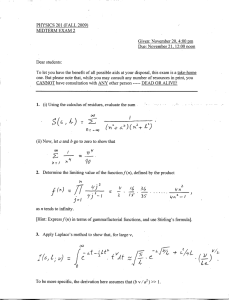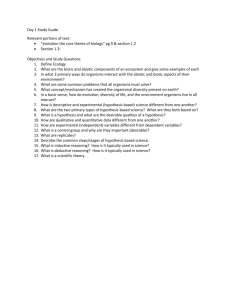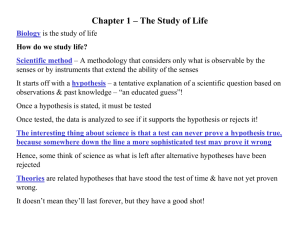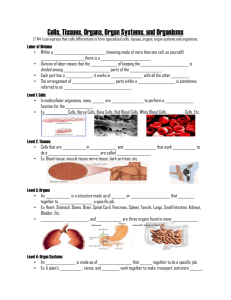Introduction to the course
advertisement
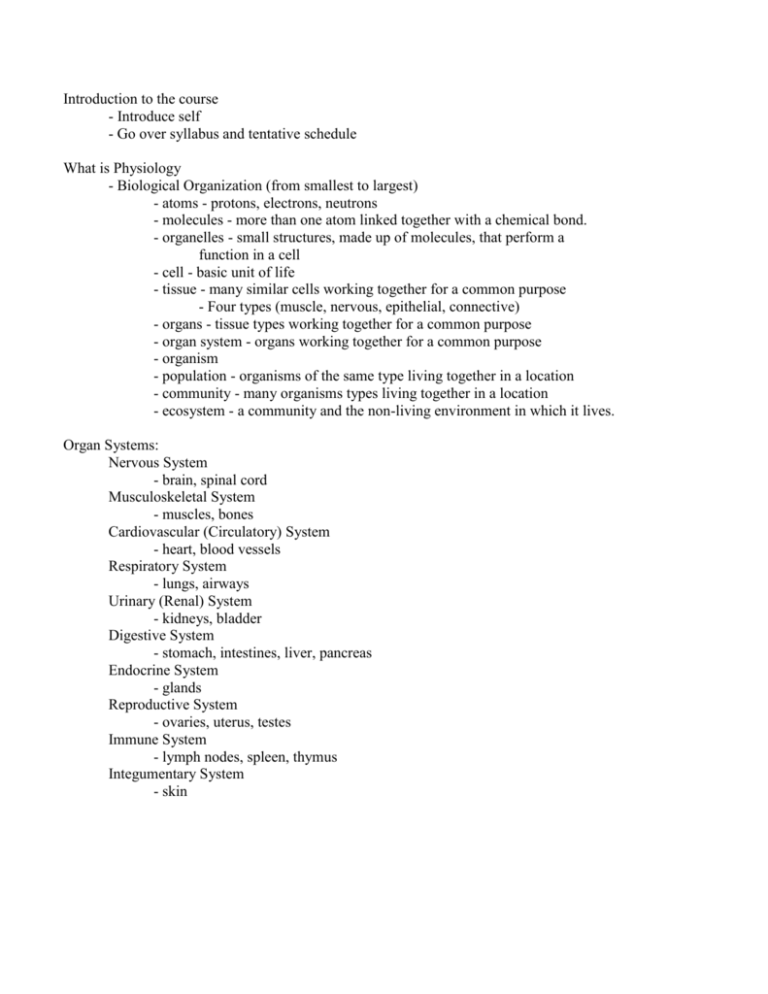
Introduction to the course - Introduce self - Go over syllabus and tentative schedule What is Physiology - Biological Organization (from smallest to largest) - atoms - protons, electrons, neutrons - molecules - more than one atom linked together with a chemical bond. - organelles - small structures, made up of molecules, that perform a function in a cell - cell - basic unit of life - tissue - many similar cells working together for a common purpose - Four types (muscle, nervous, epithelial, connective) - organs - tissue types working together for a common purpose - organ system - organs working together for a common purpose - organism - population - organisms of the same type living together in a location - community - many organisms types living together in a location - ecosystem - a community and the non-living environment in which it lives. Organ Systems: Nervous System - brain, spinal cord Musculoskeletal System - muscles, bones Cardiovascular (Circulatory) System - heart, blood vessels Respiratory System - lungs, airways Urinary (Renal) System - kidneys, bladder Digestive System - stomach, intestines, liver, pancreas Endocrine System - glands Reproductive System - ovaries, uterus, testes Immune System - lymph nodes, spleen, thymus Integumentary System - skin Key concepts: Homeostatis (similar, condition) - Maintenance of a stable internal environment within the body. - Biological variables are kept at certain levels. - examples: body temp., blood glucose levels, oxygen levels, pH, blood pressure, etc. - Mechanism for homeostatis - negative feedback loops controlling regulated variables. Generic negative feedback loop: variable ----> sensor -----> integrator (has a set point) ----> effector ----> alters variable Example: Body temperature. Scientific Method: 1) Observe a phenomena 2) Develop a hypothesis (first best guess) 3) Develop and run an experiment to test hypothesis 4) Analyze results and form a conclusion 5) Communicate results to others. To test a hypothesis you have to measure something. Typically there are two groups that are exactly the same except for a single variable, called the independent variable. All other variables are kept the same (controlled variables). What you measure is the dependent variable. Example: Do plants grow more when chemical X is applied to the soil they are growing in? What is the independent variable, dependent variable, controlled variables? Graphs: Used to communicate data more easily Independent variable always goes on the X-axis (bottom horizontal) Dependent (measured stuff) always goes on the Y-axis (left vertical) Both axes must have labels and units. Two basic types: Bar graph: used when independent variable is in groups (eg. dog breeds) Line graph: used when independent variable is continuous (eg. time, weight).


